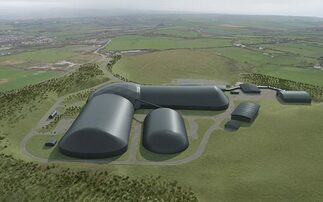
Mission Possible Partnership publishes fresh plans to help decarbonise production of aluminium, ammonia and steel across aviation, shipping, and trucking industries
Some of the world's hardest-to-abate and most carbon-intensive industries, including the production of aluminium, ammonia and steel sectors, have this week provided further details on how they could decarbonise in line with global climate goals.
The Mission Possible Partnership (MPP), an alliance of organisations that are working to decarbonise hard-to-abate industries, this week published a series of new decarbonisation roadmaps, which were unveiled at New York Climate Week.
The new plans, or Sector Transition Strategies (STS), have been endorsed by more than 200 industry leaders from 60 companies, which are working to decarbonise carbon intensive materials and the wider aviation, shipping, and trucking industries they serve.
The group this week released two new STS reports for aluminium and ammonia, as well as an updated steel strategy.
The MPP said the 200 signatories supporting the plans reflected growing industry interest in efforts to curb emissions from industrial manufacturing. Supporters from the steel industry include ArcelorMittal, Companhia Siderúrgica Nacional (CSN), Liberty Steel, SSAB, Rio Tinto, Tata Steel, thyssenkrupp, and Vale, while leading aluminium producers Alcoa, Rio Tinto, and EGA have also signed up to the initiative. In the ammonia sector, CF Industries, BASF, SABIC and Yara, as well as renewable energy providers Ørsted, Iberdrola, and ACWA Power also backed the proposed plans.
"These transition plans are operationally relevant and industry-backed, not wishful thinking or pie in the sky," said Matt Rogers, chief executive at the MPP. "We know how to reduce emissions, initially deploying resources and technology available today. The imperative is to act now, in this decade. We're working with industry, supply chains and finance to deliver the clear thinking and asset-by-asset plans to make net zero viable."
Each STS plan is premised on the deployment of available technologies by 2030, a date that MPP said was of particular significance given the long life of manufacturing infrastructure and the need to deliver net zero emissions by 2050.
The reports detail specific requirements - with real-economy milestones - for clean energy deployment, the development of new or retrofitted industrial plants, and policy reforms that can help industries meet sectoral carbon budgets aligned with the Paris Agreement goal of limiting global heating to 1.5C above pre-industrial levels.
Faustine Delasalle, vice-chair of the Energy Transitions Commission (ETC), a founding partner of MPP, said the support for the new strategies from more than 200 industry members was "a signal of hope".
"Companies around the world are committed to invest at scale for a net-zero-emissions economy," she said. "The data developed by ETC with MPP partners will inform targets and actions from companies in key value chains, as well as financial institutions and governments - and helps all of us to keep decision-makers accountable".
In the steel sector, MPP said that early progress in breakthrough projects and increased supply of near-zero primary steel are "essential" to remain within a Paris-aligned sectoral carbon budget. MPP estimated that commercialisation of net zero technologies for the industry could cost up to $200bn a year, implying significantly higher demand for hydrogen, clean electricity, and natural gas. But such a scenario would result in a "stark decline" in coal-powered smelters that would deliver signifiant long term economic and environmental benefits.
The strategy was welcomed by Sanjiv Paul, vice-president for safety, health, and sustainability at Tata Steel, who said that it "has laid down the challenges for the steel industry to decarbonise".
"We are collaborating with suppliers, downstream partners, start-ups, academia, and communities within our area of influence to work towards mitigating the threat of climate change," he added.
MPP's STS for primary aluminium would similarly seek to boost clean power capacity and improve material efficiency and recycling through the deployment of technologies that could reduce carbon emissions from the sector by 95 per cent.
In contrast, if the aluminium sector were to continue on a business as usual pathway MPP estimated it could cumulatively emit as much as 37 gigatons of carbon by 2050, which would reflect an overshoot of more than double the Paris-aligned carbon budget for the sector of 15 gigatons.
"Aluminum plays an essential role in decarbonisation economy-wide, but it also matters how aluminum is made," said Abdulnasser Bin Kalban, chief executive of Emirates Global Aluminium.
"Decarbonising aluminum by 2050 requires rapid and proactive cooperation with other sectors, from developing more renewables to designing final products that are easily recyclable. The Mission Possible Partnership's roadmap will help us achieve this great task."
Similarly, MPP forecast demand for ammonia could increase six-fold by 2050, driven my new markets for green ammonia as a marine fuel and for power generation.
According to MPP, the shipping sector has the potential to "make or break demand" for near-zero emissions ammonia. Coordination by policymakers to adopt, certify and expand ammonia's new application as a marine fuel will be critical to the transition, MPP said.
In addition to its new STS reports released this week, MPP said it is also working on strategies for concrete, cement, and the chemicals sector which it plans to release later this year.









